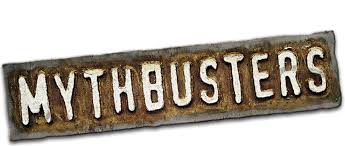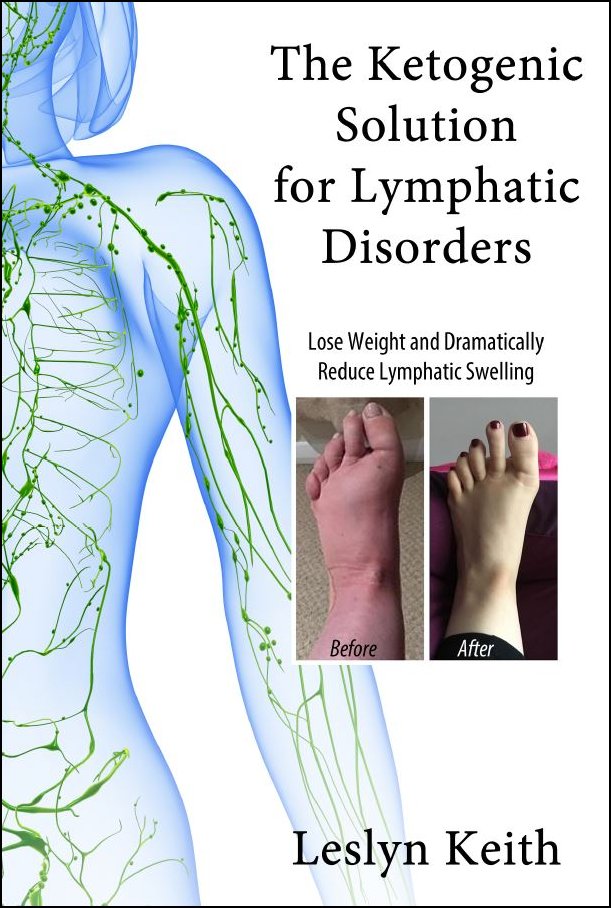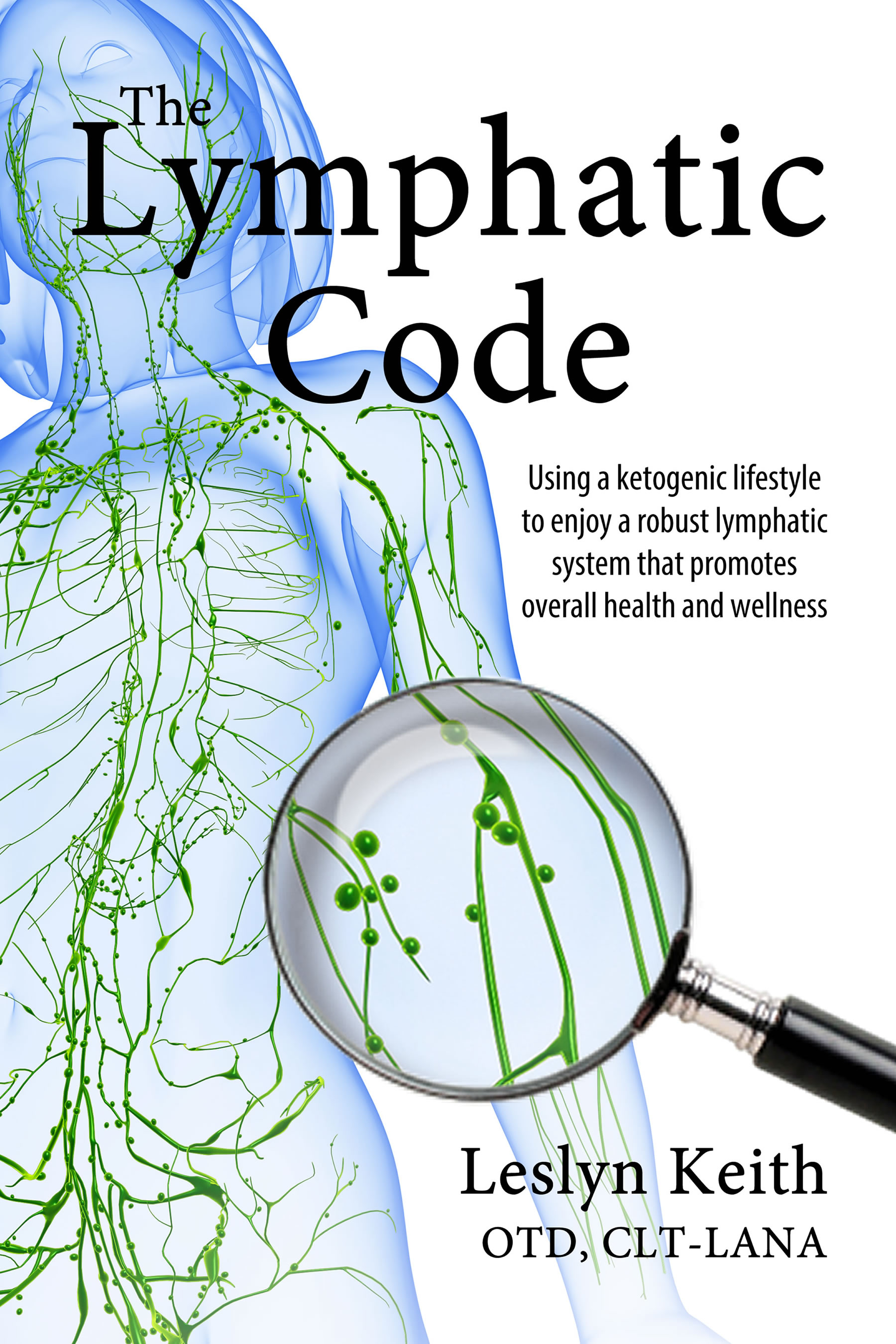The Fiber Lymphedema Connection Part 1
I’d like to do some myth busting about the fiber lymphedema connection - the myths around the concept that fiber is a health food. This is of special concern for people with lymphedema, who may be trying to eat a healthy diet.
Fiber is plant material that is unable to be digested by humans. We lack the enzymes that ruminants (cows, goats, buffalo, etc) have to accomplish this. The standard recommendations are that we should eat a high amount of fiber and it is often said that people should strive to increase their intake of fiber. This article is my take on the truth about fiber.

Myth #1 Fiber and Elimination
The first myth with regard to fiber is that it helps with elimination. This idea is backed only by folk wisdom. When it comes to the science, the opposite has been shown to be true. Here’s a study done in 2012 with 63 individuals who had constipation of at least 2 years duration. The title is: Stopping or reducing dietary fiber intake reduces constipation and its associated symptoms. Their conclusion was that constipation and its associated symptoms could be most effectively reduced by lowering or even stopping eating fiber. Authors from that study have since commented that most of the participants have continued their low fiber diets even after the term of the study ended.
High fiber advocates say that consuming more fiber improves motility - that it makes the foodstuff move faster - thus the gut doesn’t have as much time to absorb any complex sugars from your diet. But fiber actually slows everything down. Interestingly, as people age, their digestion slows down. This is a result of lowered ability of their intestines to absorb nutrients because of lowered acids and enzyme levels. Slowing down motility would allow for more nutrient absorption. Fiber advocates want to have it both ways. Move it through faster to improve elimination, or move it through slower to aid absorption? It can’t be both.
Myth #2 Fiber and Digestive Disease
A second myth is that fiber helps with digestive diseases. The suggestion has been made that to help with digestive diseases one must consume more fiber. A few common maladies of the digestive system include hernia, enteritis, bloating, flatulence, appendicitis, diarrhea, along with constipation. Fiber doesn’t enhance outcomes associated with any of these conditions. The human body has no need for flatulence, except maybe for movies like Blazing Saddles. There are several more serious diseases of the digestive system: irritable bowel syndrome, hemorrhoidal disease, ulcerative colitis, Crohn’s disease, and colon cancer. There are no comprehensive studies showing benefit from fiber in any of these diseases.
One misconception is how fiber can treat diverticulosis. Diverticulosis is the bulging out of small pouches in the lower intestine. These pouches contain the fiber remnants of food that has not been absorbed along the way through the small intestine. Purposely eating high fiber foods, or perhaps a fiber supplement, leaves excess fibrous matter in the lower colon. If some sort of obstruction is present, like hemorrhoids, it can cause the fiber to backup and cause pressure that must go somewhere. The pressure then pushes out small pouches in the intestine, called diverticula. The result of diverticulosis is that over time the fiber stagnates and becomes a hardened mass. These masses can cause pain and irritation that is difficult to heal if more fiber is continuously added to the equation.
In the worst case, which is not so uncommon, the hard lumps of fiber cause lacerations which let material that is supposed to stay in the gut out into the abdominal cavity (the space outside of the digestive tract). This is identical to having a burst appendix. The result is an infection and a dire emergency that is difficult to fix. Fiber does not help in diverticulosis and may actually bring on diverticulitis.
Fiber is also called roughage, because it’s rough. That harsh fiber material can do lots of damage as it moves through the digestive tract. It actually can scrape off the mucus lining that is there to protect the delicate microvilli that house lymphatic and blood vessels that can only absorb fatty and amino acids that have been liquified. They cannot deal with solid indigestible fibrous material that only does damage.
A better option is to eat what are called low residue foods. That would be fats and protein. Both of those foods are absorbed completely in the small intestine so there is no harsh material left to back up in your colon.
Myth #3 Fiber and Gut Health
Yet another myth that you often hear is that you need to feed the bacteria in your gut. That may be true, but you don’t have to feed them indigestible fiber. The bacteria are happy as punch to live on the secretions of your intestines. The research looking to find which combination of bacteria is healthy and which is unhealthy is a long way from giving us answers. Even in two different healthy people, the makeup of the bacteria and fungus and other organisms in their guts is different.
Somehow people have come to believe that feces should be made up of undigested foodstuff. That is not true in a healthy person. Most of the matter in feces is dead cells, most commonly blood cells and dead bacterial bodies. When not eating high fiber carbohydrates, very little foodstuff goes out because it should have been absorbed. Fiber tends to add unnecessary bulk.
Much of this information can be found in the excellent book Fiber Menace, by Konstantin Monastyrsky. His website is gutsense.org. (Please Note: As an Amazon Associate, I earn from qualifying purchases.)
Books by Leslyn Keith, OT
|
Buy the print softcover book on Amazon Buy the E-book via Paypal |
Buy the print softcover book on Amazon Buy the E-book via Paypal |

